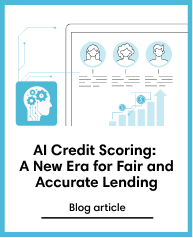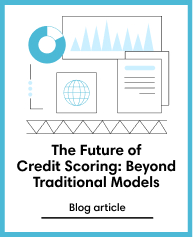Credit Scoring
Oct 1, 2021
A Good Look at the Rise of Neo/Challenger Banks
Subscribe to our newsletter
Prior to the pandemic, the future looked bright for challenger banks—defined as small, retail banks competing with long-established ones by leveraging the latest in financial technology. Mobile networks leapt from 3G to 5G in just a few years, e-commerce and online payments grew in prominence, and an emerging middle class from various developing markets became a new audience to reach out to.
A recent Kearney survey offers clues as to why challenger banks have suddenly become popular. 36% of customers said opening an account with these banks was simply easier. 28% commended these banks’ “slicker” technology while commending the fact that they could bank with multiple apps.
Despite the rising popularity of challenger banks however, not everything has gone smoothly. Despite their stellar start, challenger banks now have to face an unprecedented number of challenges.
When the challengers are challenged
The COVID-19 pandemic has shocked traditional banks into adjusting to the circumstances. Almost overnight, large, traditional banks have realized the importance of online transactions, better customer experiences, and streamlined onboarding processes—all unique selling propositions held dear by challenger banks. In short, the pandemic has prompted traditional banks to quickly play catch-up with challenger banks.
Additionally, some governments are scaling back on the pandemic-related programs that carry the volume of everyday spending, transfers, and deposits that are so crucial to many challenger banks’ understanding of their customers. Finally, the cost of customer operations for challenger banks has grown over time, causing them to bring on additional charges and fees for their customers.
In the meantime, large, traditional banks have made substantial gains in mobile and online banking satisfaction. Bank of America and Chase have increased their cross-sales and retention by offering preferred pricing and rewards to their existing customers.
Potential solutions
Challenger banks need to remind consumers of the edge they had over traditional banks in the first place. Though they no longer have a monopoly over technology, they can lean into leveraging data to personalize their products and services.
Challenger banks should consider that as their customer base grows, their arsenal of consumer data grows alongside it. What’s important then here is that challenger banks work with fintech-as-a-service partners who can help spot useful data and figure out what to do with it. For example, spending data could form the basis of a customer loyalty/rewards program. Remittance data can provide info on recurring international payment trends for e-commerce merchants.
Incidentally, alternative data has also risen in popularity lately. Challenger banks such as Tonik use alternative data (such as data from smartphones, navigation data, etc) to put together alternative credit scoring solutions and reach a new target market. Seeing as the main cost elements in a credit business are cost of risk and cost of servicing, Tonik worked with credolab’s credit scoring app to use alternative data as a means of verifying potential loanees.
Using credolab’s credit scoring SDK and fraud SDK for better credit risk management, Tonik is able to reach out to new, potential customers and gain permission to access their metadata for credit scoring. Working with credolab this way allows them to access a new client base traditional banks can’t reach just yet, as many still rely on using banking history to verify a potential loanee.
The future of challenger banks
Many of the advantages challenger banks held over larger, more traditional banks are quickly eroding in the wake of the pandemic. Nowadays, every bank has a mobile app, most transactions take place online, and a pleasant user experience is expected.
The future of challenger banks lies in leveraging their flexibility. They must use actionable data to craft products and services that are in tune with the customer’s changing financial needs, in turn providing a better customer service experience.
Smaller, challenger banks will play an indispensable part in the lives of small business owners, emerging middle class, and young adults who do not have the extensive banking history that would make them eligible for premium services with bigger banks.
Challenger banks must embrace alternative data and their role in challenging the notion of “creditworthiness” of a consumer. By doing so, people will be reminded why they turned to them in the first place.





